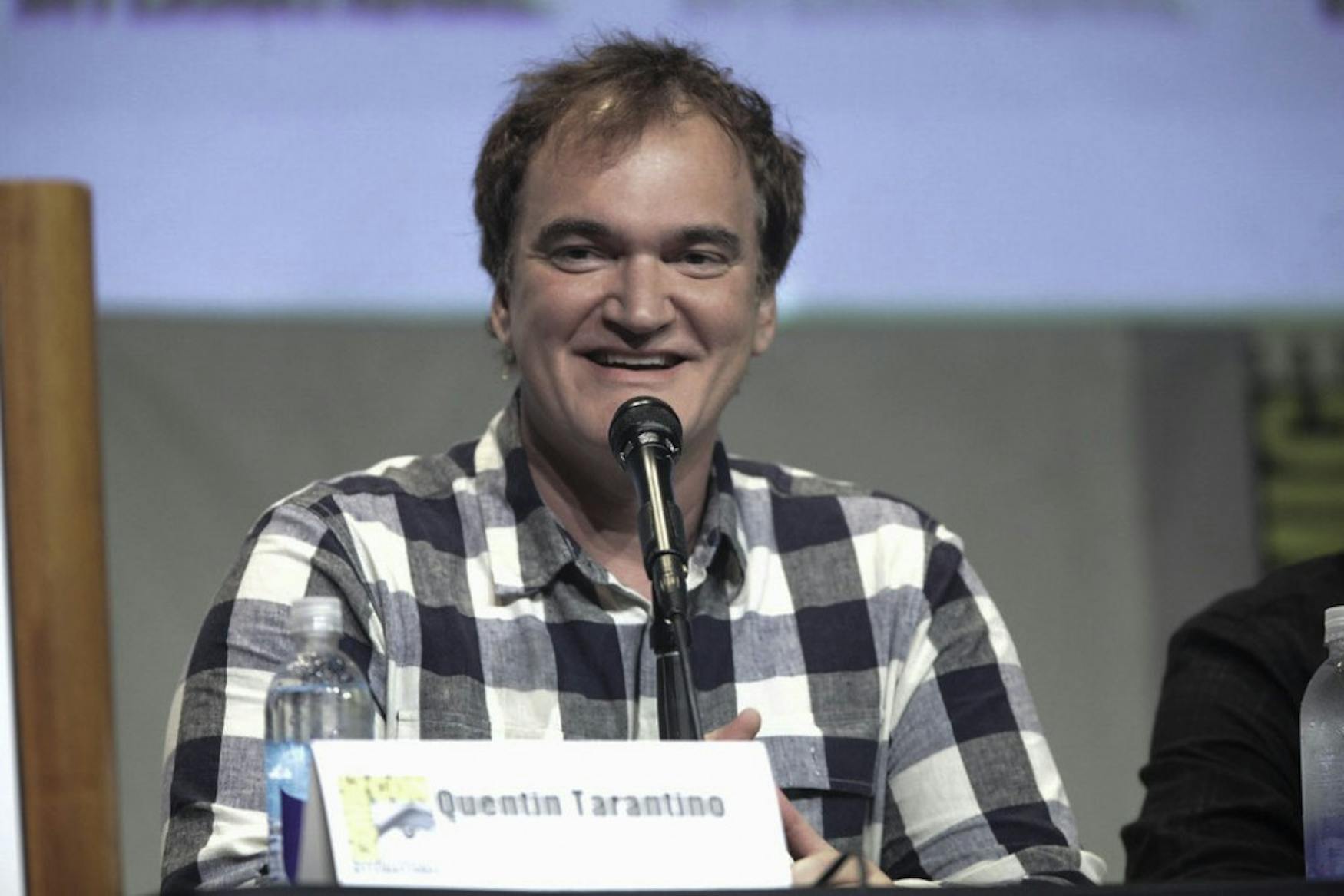A love letter to Hollywood, and more
A Quentin Tarantino movie without five hundred gallons of fake blood and eight flashbacks in a row? Now you have it. “Once Upon a Time in Hollywood” is Tarantino’s ninth movie, written and directed by himself. Set in 1960s Los Angeles, the film tells the story of washed-up actor Rick Dalton and his stunt double Cliff Booth, played by Leonardo DiCaprio and Brad Pitt respectively, who struggle to survive in a changing world. At the same time, the rising star Sharon Tate (Margot Robbie) just moved into the area with her husband and is familiarizing herself with the town.
Without a doubt, “Once Upon a Time in Hollywood” is one of the most wellcrafted films of the year. The production team redecorated several blocks of street to accurately present Los Angeles in the 60s, down to every poster and every store along the street. However, what makes it more believable is the amount of different environments it presents. From the glamorous Playboy Mansion to filthy abandoned trailer parks, the film catches a variety of parts of the city, which is rarely seen in movies portraying that time period. The soundtrack of the movie used many radio advertisements from the period to further enhance the experience, based on the director’s memory of growing up in the area.
One problem writers face when trying to create a script based on a well-known true story is that unavoidably, the ending of the story is fixed from the beginning. It’s very difficult to create dramatic tension when the audience walks into the theater knowing what’s going to happen. However, this plays in Tarantino’s most unique filmmaking technique, which is called “playing with the audience.” Knowing that audiences are likely to know the history of Sharon Tate, the director turned the situation around by using it as a ticking clock. Viewers are on edge the whole movie, waiting for what they assume is going to happen. At the same time, Robbie as Sharon Tate does a fantastic job on delivering the grace and energy this individual represents, an innocence that is not seen in any other character. Without spoiling too much, I can say that it is the most unconventionally thrilling script I have encountered in the last few years.
The all-star cast delivered two hours and forty minutes of charming performances, and what makes it work so well is the casting choices. Anyone who follows the world of movies know Leonardo DiCaprio and his enormously successful career throughout the last two decades. Seeing him playing a struggling action star in the 60s, the audience cannot help seeing two opposite lives projected on one person. Through this peculiar space where reality interacts with the movie, the director pays respect to not just the actors that are remembered by the public, but also the ones who did not earn the same amount of fame, yet still offered the best of themselves to audiences. One of those people includes Pitt’s character. Following his carefree attitude, the audiences are introduced to a different side of the same city, where violence is not only everywhere, but also the only way to protect one’s self, whether that is on set or off set. If DiCaprio’s role is meant to remind us the forgotten grace of Hollywood, the job of Pitt’s role is to break the unspoken norms and expose the darker parts of the world to the audiences.
While all of the previous points made “Once Upon a Time in Hollywood” an excellent film, what truly made this movie stand out for me was Tarentino’s unique view of the cultural conflicts in the 60s. Instead of solely criticizing or glorifying any sides in that era, the film presents the characters as different images of the mysterious world of Hollywood. In one scene, we see DiCaprio’s character being inspired by a little girl on set about life and career, then going on to deliver an excellent performance and winning the applause of the crew. While our heart was still warmed by the dream-like sequence, we see Pitt’s character encounter a group of beast-like tennagers who stabbed his car tiers as a threat. Even though seeing Pitt beat up the hooligans afterward provides a sense of satisfaction, of justice being done, it also makes one wonder how two seemingly opposite worlds can exist at the same time. In my view, this is exactly what Tarentino’s Hollywood is like. Following those different perspectives, Hollywood can be a town of fairy tales or the source of all evil, and they might very well exist at the same time.
Tarantino has always been one of the more divisive filmmakers in recent decades. People who enjoy his style consider him the genius of our time, and people who hate it think he prioritizes style over substance and has an obsession with violence. What surprised me about “Once Upon a Time in Hollywood” is how reserved Tarantino was throughout the film. Instead of being overwhelmed by multiple storylines and fake blood, I was led through an original story with a unique point of view and a surprisingly heartwarming ending. There were several times where the director let himself loose with some of the funniest scenes of graphic violence I have ever seen, but in the end, I see a director who surpassed himself and matured into a real master of cinema.



Please note All comments are eligible for publication in The Justice.